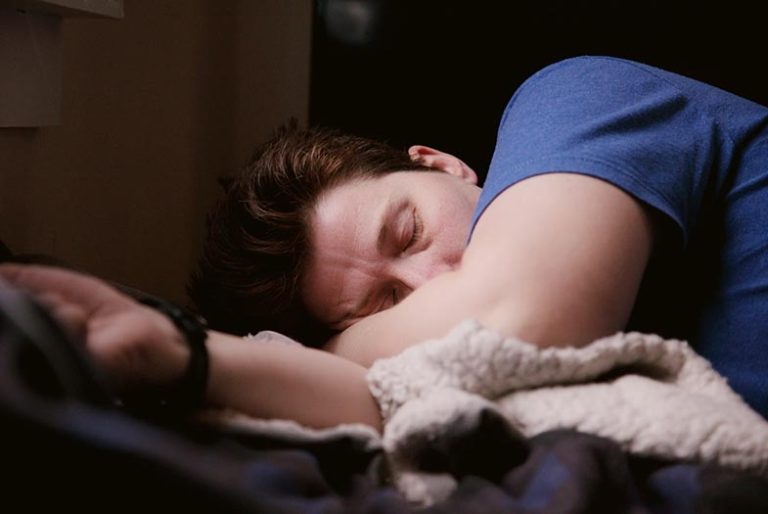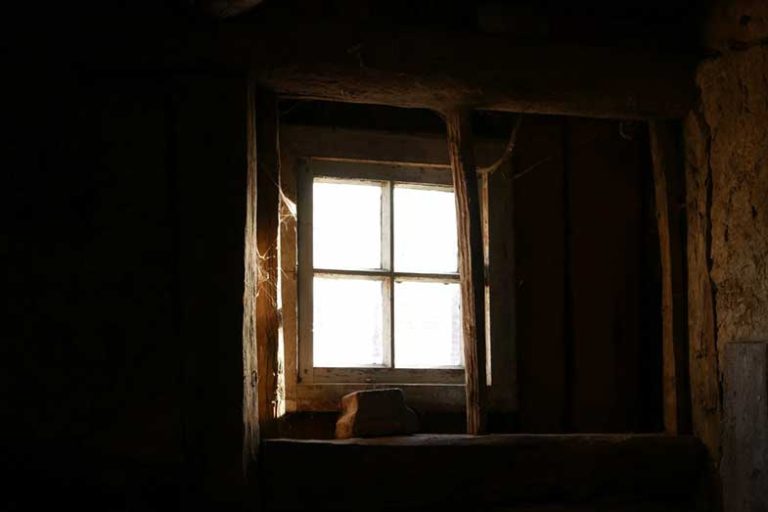Can You Sleep With a Surgical Mask?
Disclosure: We may get commissions for purchases made through links in this post.
For a long time, healthcare workers are not just the only ones who wear surgical masks, especially in East Asian countries, non-healthcare workers also wear a mask to protect them from environmental items and prevent transmission of infectious agents. With the growing fear of putting their loved ones or themselves at risk, especially with the latest COVID-19 outbreak, people are wondering and asking, “Can you sleep with a surgical mask?”. That is a valid concern, especially if someone is sick at home or you live with an immunocompromised individual.
So can you sleep with a surgical mask on? Wearing a surgical mask while sleeping has its advantages and disadvantages, so it’s both a yes and no. There are also situations when one can wear a mask while sleeping, as well as specific individuals who are highly suggested to wear a mask while sleeping.
Let’s talk about why you should and shouldn’t wear a surgical mask while sleeping, as well as learn how often you should change it, how to use it, and if a dust mask is a good alternative.

Is It OK to Wear Surgical Mask While Sleeping?
Wearing a surgical mask while sleeping depends on many factors, so let’s better understand some of the reasons why wearing a mask while sleeping is both okay and not okay.
Why It’s Not Okay
Here are some of the primary reasons you shouldn’t wear a surgical mask while sleeping:
1. Uncomfortable to Wear
Undoubtedly, wearing a mask while you’re sleeping would be uncomfortable not only because there is a foreign object on your face but also because of the surgical mask’s design. The edges of the mask, made of paper, would definitely rub against your facial skin each time you move.
Likewise, the metal strip found on the mask’s nose area, which is meant to ensure the mask fits, would also rub against your nose. The warm air you exhale will also accumulate under your surgical mask and will be directed up to your eyes.
People who wake up with an oily face will also feel more uncomfortable because the area covered by the face mask will be oilier than usual. Nonetheless, there are ways on how to prevent waking up with an oily face.
2. Constant Removal
The only thing that will hold the surgical mask in place while you sleep is the straps on both ends. Not only are they somewhat uncomfortable, but they also can easily get dislodged from your ears.
As such, you would usually end up waking up without the mask, especially if you toss and turn while sleeping. Sometimes, you would also consciously remove the surgical mask because you feel uncomfortable.
Why It’s Okay
Wearing a mask while you sleep has its perks, much like when you wear it during the day. Some of them include:
1. Keeps Your Face Warm
During the cold season or winter, we tend to bundle up, wearing several layers of clothes and socks, as well as make sure we have the thickest and most comfortable comforters. Though we may have heaters, sometimes we don’t crank the temperature up enough to keep us warm, especially our faces. Wearing a surgical mask while sleeping can keep the lower part of your face warm while your breath going upwards to your face will keep the rest of the face warm.
2. Sore or Dry Throat Prevention
People who have colds will greatly benefit from wearing a surgical mask while sleeping. Most of us know that when we suffer from colds, we breathe through our mouths.
Mouth breathing often leads to a dry throat, which would eventually cause sore throat. However, when you wear a mask while you breathe through your mouth, the moisture gets trapped, so your throat remains moist until you wake up.
3. Unhealthy Particle or Odor Blocking and Filtering
The primary purpose of a surgical mask when you wear it during the day is another reason one must wear a mask while sleeping. This is most especially for individuals with respiratory problems, like asthma, as well as allergies.
When you sleep, you are not safe from inhaling possible dander, pollen, and other allergens present in your home or the place where you’re currently sleeping. The surgical mask will help prevent the entry of these elements to your nose.
Surgical masks also help filter out or trap smoke, environmental odors, and chemical scent that can trigger attacks, as well as cause allergies and respiratory problems. As such, it is best to wear a mask while sleeping, especially if you will do so in an unhealthy environment like in the airplane.
With all that said, you must take note that merely wearing a mask while sleeping can help you avoid any attacks, especially if you have a moderate or severe case of asthma or allergies. Experts recommend that you should also invest in good air-filtering or air-purifying systems and a hypoallergenic bed sheet set, pillow, blanket, or comforter, as well as ensure you have clean and vacuumed carpets, furniture, and curtains.
How Often Should Surgical Masks Be Changed?

Surgical masks are disposable, so you must only wear them once. Usually, if you’re only at home, you can wear it throughout the day, but if you’re outside, it is best to change it every four hours or when you remove it when you enter an establishment, whichever comes first.
Those recommended times aren’t standard, though. You must change it once the mask gets dirty because it will do you more harm than good. Likewise, once the mask gets wet, change it immediately since the filtering ability might be compromised already.
Of course, when there’s a hole or any sign of damages, consider wearing a new surgical mask. Lastly, the mask you wear when you rest on your comfortable, firm mattress should always be new.
Which Side Do You Wear a Surgical Mask?
Now, if you plan on wearing a surgical mask, whether during the day or when you sleep, you must make sure you wear it correctly. If not, the mask will not do its job, especially its filtering function.
One thing to remember is that a surgical mask has two sides: an uncolored side and a colored side. The colored side should always face outward, while the uncolored should touch your face. With that in mind, here’s the proper way of wearing a mask:
- Wash your hands.
- Place the mask over the lower part of your face, starting from the area below your nose bridge. Make sure that the part with the metallic strip is at the top.
- Place the straps over your ears. You can twist the strap to make the number eight if you want it to have a tighter fit, especially if you have a small face.
- Press the metallic strip touching the area below your nose bridge to get a perfect contour.
- Hold the top area of the mask and pull the lower part up to the chip of your chin to ensure it covers your nose, mouth, and chin adequately, and it stays in place.
- When you remove your surgical mask, make sure not to touch the outer surface, and you wash your hands after.
- Once removed, you must fold the surgical mask outwards, which means the uncolored side should be showing. That is because the colored side has all the dirt and possible germs.
- The last step you need to do is place the used mask in a plastic or paper bag before tossing it in the trash bin.
Is It Dangerous to Sleep With a Dust Mask On?

Aptly named, a dust mask is a type of mask used more commonly by individuals working in the construction and cleaning industries to prevent dust and sand inhalation. With its capability to filter such small particles, some healthy and unhealthy individuals also choose to use a dust mask when they’re outdoors or crowded indoor places.
But is it dangerous to wear one while sleeping? Yes, it is.
Reasons
In contrast to a surgical mask, wearing a dust mask while sleeping is something that you shouldn’t consider because of the following:
1. Uncomfortable and Painful
The mask is a bit more uncomfortable than a surgical mask because the straps are usually made with thicker and heavier materials, such as rubber. These straps also commonly go around your head, so they might leave marks on your cheeks and give you a headache when worn for an extended period.
2. Air Restriction
Although a dust mask will not completely restrict you from breathing air in and out, it doesn’t provide enough “vents” to do so as compared to a surgical mask. Also, the mask material is thicker than the one used for surgical masks. Hence, you won’t be able to breathe as close to your normal breathing as possible.
Conclusion
Wearing a mask during the day, whether or not there is a pandemic or it’s the flu season, is a good decision to ensure you stay healthy or protect other individuals when you’re the one who is sick. When you rest your head on your soft pillow, though, there are things to consider before wearing a surgical mask.
If you have asthma, allergies, or colds, it is a good idea to wear a surgical mask. If you have other respiratory problems, it is best to consult your physician before considering sleeping with a mask.
With that in mind, make sure you don’t wear the surgical mask for an extended period and change it when it’s dirty, wet, torn, and have holes. Similarly, dispose of the used surgical mask properly to prevent any spread of germs that may be lingering on the outer part of the mask.
It is also a good idea to wear a surgical mask when sleeping inside the airplane and at the airport when you travel. Lastly, if you don’t have a surgical mask, keep in mind that wearing a dust mask while sleeping might do you more harm than good.






